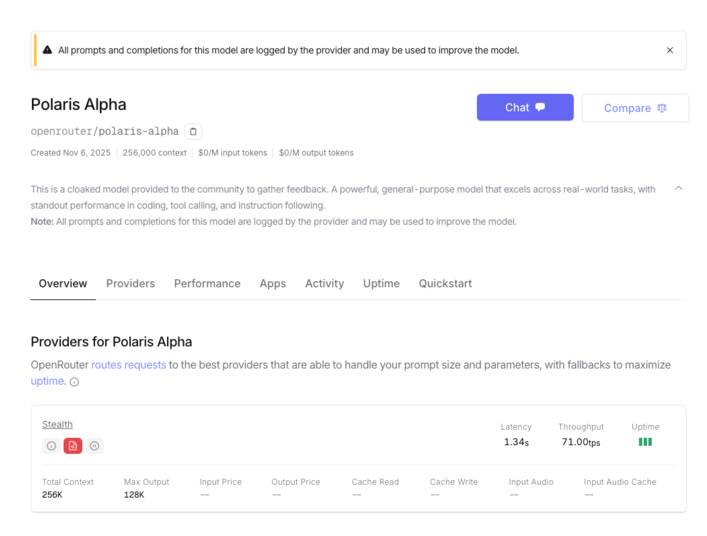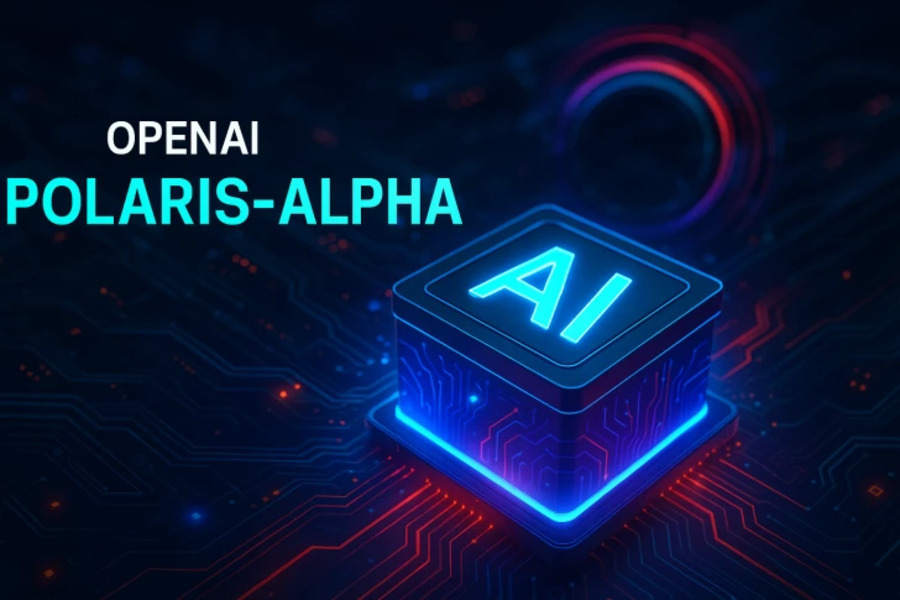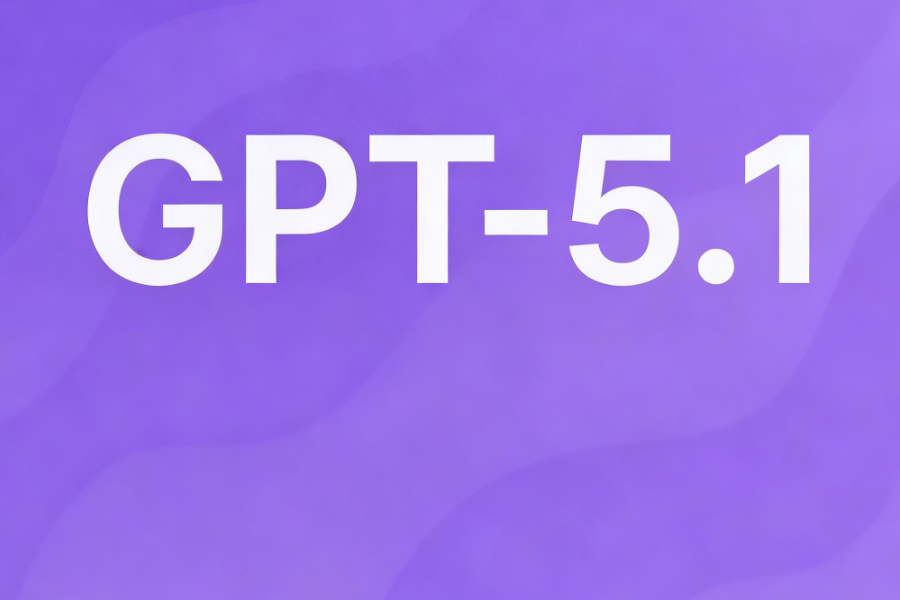In a quiet yet significant move, OpenAI has discreetly launched an anonymous large language model, codenamed “Polaris Alpha,” on the third-party distribution platform OpenRouter. While not officially confirmed by the company, its performance characteristics closely align with community speculation surrounding the much-anticipated GPT-5.1, sparking intense testing and fervent discussion among developers and AI enthusiasts worldwide.
This covert release arrives at a critical juncture, as competitors like Google’s Gemini 3 and Anthropic’s Claude 4.5 continue to apply market pressure. The emergence of this potential “hidden ace” could be a pivotal strategic move for OpenAI, setting the stage for a significant year-end counteroffensive in the increasingly competitive AI landscape.
Key Features of Polaris Alpha

Early user tests reveal that Polaris Alpha boasts a substantial context window of 256K tokens, with a single output capacity reaching 128K. Its knowledge base has been updated to include information up to October 2024, marking a notable improvement over its predecessor, GPT-4 Turbo.
The model demonstrates robust performance in long-document comprehension and complex, multi-step reasoning tasks. It has proven particularly impressive in processing dense texts such as academic papers and technical manuals, where its ability to extract key information and perform logical synthesis stands out.
Perhaps more striking is the model’s expanded breadth of knowledge. Multiple users report that Polaris Alpha frequently cites obscure or niche information sources that were previously seldom referenced by the GPT series, indicating a significantly enhanced capability for information mining and integration. In creative writing, the model shines with its ability to generate nuanced, stylistically consistent content from vague prompts.
For instance, a simple instruction like “write a cyberpunk-style monologue in a café” yields multiple versions of text, each exhibiting distinct stylistic flair and emotional depth, with a linguistic naturalness that approaches human-level quality.
A Leap Forward in Programming Capabilities
Polaris Alpha also demonstrates a significant evolution in code generation. Users report successfully generating complete, functional code for small games like Snake or Whack-a-Mole from simple prompts. The generated code often includes core interactive logic, basic interface rendering, and boundary condition handling, resulting in programs that are immediately executable.
This capability suggests the model has moved beyond mere syntax comprehension to a deeper understanding of overall program architecture. It acts as a powerful assistant for developers, providing highly usable first drafts that can significantly accelerate the development workflow.
NSFW Mode on the Horizon
A particularly notable development is the indication that Polaris Alpha includes technical preparations for OpenAI’s planned NSFW (Not Safe For Work) content feature, tentatively slated for a year-end rollout. While this functionality could represent a significant differentiator and a new avenue for monetization, it also presents substantial privacy, safety, and ethical challenges.
Navigating the complex balance between enabling open expression and implementing responsible content governance will be a critical test for OpenAI in its next phase of development. The company’s approach to this sensitive issue will be closely watched by the industry and regulators alike.
Final Words on Polaris Alpha
Although OpenAI has not officially acknowledged that Polaris Alpha is the fabled GPT-5.1, the evidence is compelling. Its naming convention—Polaris, or the North Star, aligning with OpenAI’s stated “AI North Star” vision—coupled with its significant performance leap and strategic release timing, strongly points to this being a pre-release technical validation.
This launch occurs against a backdrop of reported financial pressures, including a $90 billion cash flow challenge and perceived delays in commercialization efforts. In this context, the stealth release of Polaris Alpha can be interpreted as a calculated signal to the market and competitors: a clear demonstration that, despite commercial hurdles, OpenAI’s technological edge remains sharp.
It serves as a potent reminder of the company’s foundational strength in pioneering advanced AI systems, setting the scene for the next chapter in the AI industry’s rapid evolution. The model’s performance will undoubtedly fuel further speculation about the official features and release timeline for OpenAI’s next flagship model.
Read More: OpenAI Launches Lighter GPT-5 Codex Mini



